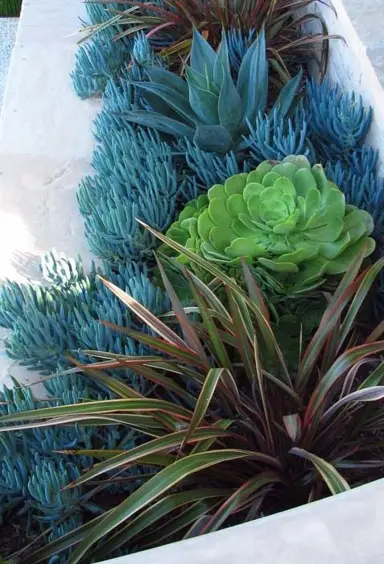
The Plant Company grows, sells, and ships Rhodohypoxis plants throughout NZ. We pride ourselves on producing high quality plants and seeing the joy from our customers when they receive them. We do hope you enjoy them and support this NZ business that is passionate about Rhodohypoxis plants.
Rhodohypoxis ‘Milloides Claret’ is a striking compact perennial admired for its deep claret red star shaped flowers that appear continuously from...
Rhodohypoxis baurii is a delightful miniature perennial admired for its star shaped flowers that appear in shades of pink, red, or white from late...
Rhodohypoxis baurii ‘Pink’ is a delightful compact perennial known for its vivid pink star shaped flowers that bloom continuously from late spring...
Rhodohypoxis ‘Fred Broome’ is a charming compact perennial prized for its masses of crisp white star shaped flowers that bloom from late spring into...
Rhodohypoxis ‘Goga’ is a standout miniature perennial known for its bright magenta pink star shaped flowers that bloom freely from late spring into...
Rhodohypoxis ‘Hope Double Pink’ is a stunning compact perennial prized for its fully double pink star shaped flowers that bloom continuously from...
Rhodohypoxis ‘Morning Star’ is a delightful compact perennial loved for its bright pink star shaped flowers that bloom continuously from late spring...
Rhodohypoxis parvula is a tiny and charming perennial valued for its delicate star shaped flowers that bloom from late spring into summer. Its fine...
Rhodohypoxis ‘Tetra Red’ is a vibrant compact perennial known for its rich red star shaped flowers that bloom continuously from late spring through...
Rhodohypoxis ‘White’ is a delightful miniature perennial prized for its neat clumps of grassy foliage topped with masses of pure white star shaped...
Growing colourful plants in your garden delivers a vast range of benefits:
We have the largest variety of Rhodohypoxis plants and the right one for your space. Our plants have been selected to thrive in NZ’s climate. We grow and stock only the highest quality plants, sourcing them locally, and from NZ’s leading nurseries. Each plant is packed and transported with extreme care, ensuring it arrives to you in the same condition it was in when it left the nursery. If you are wanting to buy Rhodohypoxis, shop with confidence from the best in the industry.
1. Does Rhodohypoxis like sun or shade?
Rhodohypoxis can tolerate both full sun and partial shade, but it prefers full sun for the best flower production. In areas with hot summers, it may benefit from some afternoon shade. It is important to provide the plant with well-drained soil, as it is susceptible to root rot if the soil is too wet.
2. Is Rhodohypoxis hardy?
Rhodohypoxis baurii can withstand temperatures down to -20°C. However, it is important to protect the plant from excessive winter moisture, as this can cause the bulbs to rot. In colder climates, it is best to grow Rhodohypoxis in pots that can be brought indoors for the winter.
3. How do you grow Rhodohypoxis?
Rhodohypoxis is a genus of small, flowering plants that are native to South Africa. They are known for their cheerful, daisy-like flowers and their ease of care. Rhodohypoxis can be grown in the garden or in pots, and they make a great addition to rock gardens, borders, and containers.
Here is a quick guide on how to grow them:
Planting
Care
Problems
Rhodohypoxis is a relatively trouble-free plant, but it can be susceptible to a few problems:
With proper care, Rhodohypoxis will provide you with years of enjoyment. These charming plants are easy to grow and require minimal maintenance. They are sure to add a touch of colour and cheer to your garden or patio.
4. What is the morning star rhodohypoxis?
The Morning Star Rhodohypoxis is a small, flowering plant that is native to South Africa. It is known for its cheerful, star-shaped flowers and its ease of care. The Morning Star Rhodohypoxis is a popular choice for gardeners because it is drought-tolerant and requires minimal maintenance. It is also a good choice for pollinator gardens because it attracts bees and butterflies.
5. How do you overwinter rhodohypoxis?
The overwintering method for Rhodohypoxis depends on your climate and whether you are growing it in a pot or in the ground.
In-ground Rhodohypoxis
Rhodohypoxis can be safely left in the ground. However, it's still recommended to provide some protection to help the bulbs survive the cold and wet conditions of winter. Here are some tips:
Potted Rhodohypoxis
In colder climates or if you want to be extra cautious, it's advisable to bring potted Rhodohypoxis indoors for the winter. Here's how to do it:
Whether you need assistance finding the plant you’re looking for or you simply want to know more about who we are and what we do, we invite you to get in touch with us today. A member of The Plant Company team will get back in touch as soon as possible.


